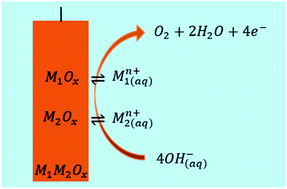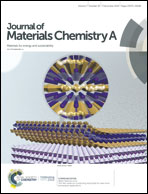Stability profiles of transition metal oxides in the oxygen evolution reaction in alkaline medium†
Abstract
The electrochemical water splitting reaction can convert renewable electricity into clean hydrogen fuel. The efficiency of water splitting is limited to a large extent by the sluggish oxygen evolution reaction (OER). Numerous transition metal oxides have been developed as electrocatalysts for the OER in alkaline medium. However, in-depth studies of the stability of these catalysts have rarely been performed. Here we report a systematic investigation of the stability profiles of five archetypical OER catalysts including CoOx, CoFeOx, CoFeNiOx, NiOx, and NiFeOx. We combine measurements of electrochemical activity, electrochemical quartz crystal microbalance (eQCM), inductively coupled plasma optical emission spectrometry (ICP-OES), and electrochemical impedance spectroscopy (EIS). We find that the eQCM analysis gives incorrect information about the mass change during the OER due to a non-ideal response, and confirms that activity is not a valid descriptor of stability. Of the five oxides, CoOx and CoFeOx lose some mass during the initial period of the OER while CoFeNiOx, NiOx, and NiFeOx maintain their mass. However, all five catalysts undergo noticeable compositional changes due to a dynamic exchange of metal ions with the electrolyte solutions. Partial dissolution of CoOx and incorporation of Fe ions are the main processes of this exchange. The dynamic exchange reaches equilibrium after 6 h, and the catalysts are stable afterwards.



 Please wait while we load your content...
Please wait while we load your content...